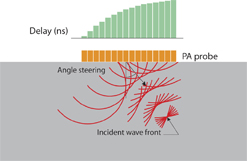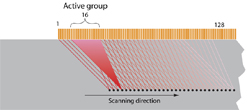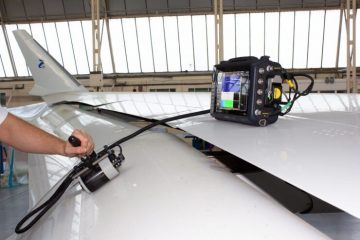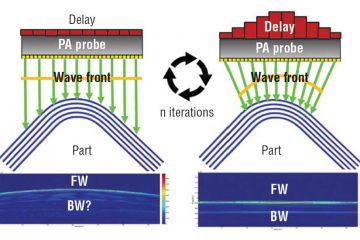In the medical applications of ultrasonic imaging, sound waves of high frequency are usually employed to produce in-depth cross-sectional images of internal organs. Special multi-element transducers dubbed as phased arrays and their associated software and hardware are used to make medical sonograms. However, the use of ultrasonic phased array technology is not relegated to medical diagnosis alone.
Recently, phased array systems have been extensively adopted in industrial environments to offer new depths of visualization and information in standard ultrasonic tests that comprise thickness profiling, weld inspection, in-service crack detection, and bond testing. In this application note, the workings and applications of phased array systems in industrial ultrasonic nondestructive testing are discussed in detail.
Phased Array Systems
Traditional ultrasonic transducers for nondestructive testing generally include a single active element or two paired elements. On the other hand, phased array probes include a transducer assembly with tiny individual elements that range from 16 to 256 elements. Each element can be pulsed separately.
Additionally, an advanced computer-based instrument is integrated into a phased array system that can drive the multi-element probe, receive and digitize the returning echoes, and map the echo data in a variety of standard formats. Phased array systems can focus at multiple depths, which improve capability as well as flexibility in inspection setups.

Figure 1. Multi-element construction

Figure 2. Typical phased array probe assemblies
Mechanism of Phased Array Systems
Basically, a phased array system uses the wave physics law of phasing, changing the time between a range of outgoing ultrasonic pulses in a way that the separate wave fronts produced by each element in the array merge with each other to either add or cancel energy in expected ways which effectively guide and contour the sound beam.
To achieve this phenomenon, individual probe elements are pulsed at sparingly different times. A focal law calculator establishes delay times for firing each group of elements to produce the required beam shape, with regard to wedge and probe characteristics and also the acoustical properties and geometry of the test material.
The instrument’s operating software chooses the programmed pulsing sequence, which introduces several wave fronts in the test material. The wave fronts then merge into a single primary wave front that passes via the test material and reflects off back walls, discontinuities, cracks, and other material boundaries.

Figure 3. Example of angled beam produced by flat probe using variable delay

Figure 4. Example of focused linear scan beam



